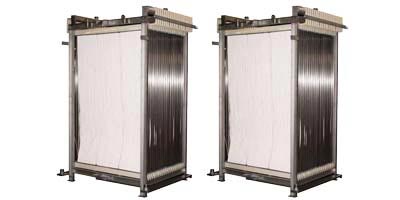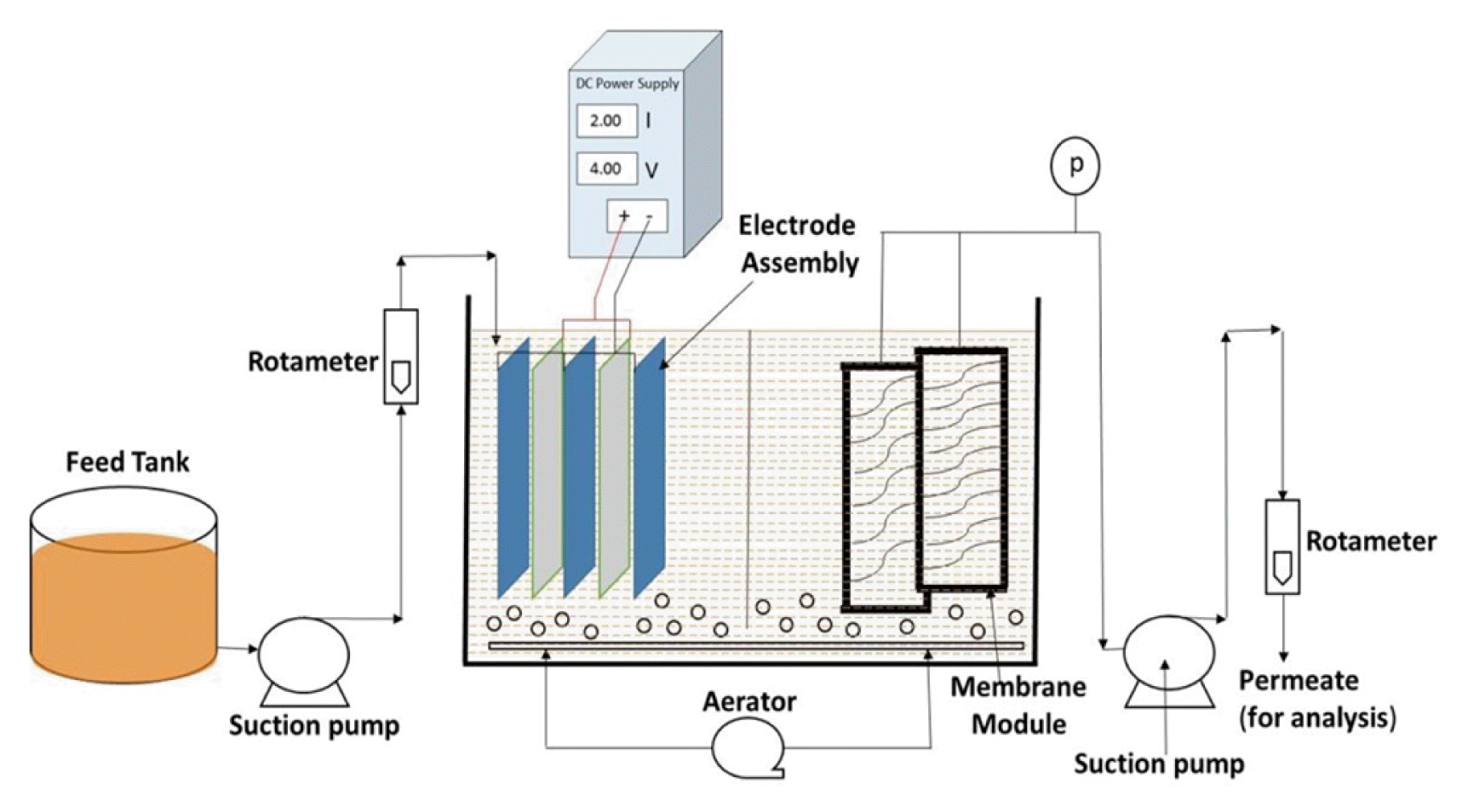Future Trends in Membrane Bioreactor Technology and Its Global Impact
Future Trends in Membrane Bioreactor Technology and Its Global Impact
Blog Article
Comprehending Membrane Layer Bioreactors: The Future of Wastewater Treatment
Membrane layer bioreactors (MBRs) stand for a significant innovation in the field of wastewater therapy, incorporating organic processes with advanced membrane layer filtering to improve effluent quality. As international water shortage and strict regulatory structures end up being increasingly pushing problems, MBR technology supplies an efficient response via its capability to minimize impact and enhance source healing. However, the fostering of MBRs is not without its difficulties, which warrant cautious factor to consider. What are the key variables influencing their execution and long-lasting viability in different contexts? The solutions may reshape our approach to wastewater monitoring.
What Are Membrane Layer Bioreactors?

The core parts of MBR systems consist of a bioreactor where microbial task takes place and a membrane unit that filters the blended liquor. This twin capability enables the simultaneous degradation of raw material and solid-liquid separation in a single step. MBRs can operate in both submerged and external configurations, with submerged systems being much more typical because of their small style and operational efficiency.
The adoption of MBR technology has gained traction in numerous applications, varying from metropolitan wastewater therapy to commercial effluent administration. MBRs are especially beneficial in situations where space is limited or stringent effluent top quality requirements need to be satisfied. By maintaining a high focus of bacteria within the bioreactor, MBRs improve the degradation of organic toxins, therefore producing higher therapy performances compared to conventional methods.
Secret Benefits of MBR Modern Technology
The combination of biological therapy with membrane filtering in MBR systems offers countless advantages that establish it aside from traditional wastewater therapy methods. One of the key benefits is the boosted effluent high quality. MBRs properly eliminate put on hold virus and solids, accomplishing greater levels of filtration that fulfill strict discharge criteria and help with water reuse applications.

Another considerable benefit is the reduced sludge production. MBR systems produce much less excess sludge, leading to lower disposal expenses and a reduction in ecological influence. The closed nature of the membrane system reduces the threat of odor emissions and improves general procedure control.
Last But Not Least, MBRs are versatile and adaptable, making them appropriate for numerous wastewater kinds, consisting of commercial and municipal resources. The capacity to incorporate with advanced treatment technologies even more improves their efficiency, making MBRs an appealing option for the future of wastewater monitoring.
Obstacles and Limitations of MBRs
While MBR modern technology supplies countless benefits, it additionally encounters numerous difficulties and restrictions that can affect its extensive adoption. One significant challenge is the high capital and functional prices connected with MBR systems. The preliminary investment for membrane materials and the essential facilities can be considerable, making it less accessible for smaller sized markets or towns.
Additionally, membrane layer fouling continues to be an important problem that can decrease system performance and rise maintenance demands. Fouling takes place when solids, raw material, or microbes collect on the membrane surface, bring about minimized permeability and calling for regular cleaning or substitute.
Another constraint includes the complexity of the modern technology. MBR systems require competent workers for operation and upkeep, which can be a barrier in regions with restricted technical expertise. In addition, the disposal of spent membrane layers provides ecological issues, as the products are typically not biodegradable and can add to waste administration challenges.
Finally, while MBRs can effectively treat a wide variety of wastewater, they may not be ideal for all applications, particularly those with go to the website high focus of fats, oils, and oils, necessitating additional study and innovation to deal with these constraints.
Applications of Membrane Layer Bioreactors
In various markets, membrane layer bioreactors (MBRs) have actually emerged as a flexible option for wastewater therapy (Membrane Bioreactor). Their applications extend community, industrial, and farming setups, showcasing their flexibility and effectiveness in diverse environments. In local wastewater therapy plants, MBRs dramatically boost effluent quality, enabling water reuse and decreasing the environmental effect of released wastewater
Industrially, MBRs are utilized in food and drink handling, fabric production, and pharmaceutical manufacturing, where they properly deal with high-strength waste streams. Their capacity to take care of differing and fluctuating loads contaminant focus makes them specifically beneficial in these fields. In addition, MBRs promote the elimination of virus, put on hold solids, and raw material, adding to compliance with stringent discharge laws.
In about his farming, MBRs are significantly utilized for treating agricultural runoff and animals wastewater, making it possible for the healing of nutrients for fertilizer production. They additionally help in the treatment of greywater for irrigation, promoting lasting water administration methods.
The versatility of MBRs is further shown by their combination with other technologies, such as anaerobic food digestion and advanced oxidation processes, boosting general performance and source healing in wastewater treatment systems.
The Future of Wastewater Therapy
Improvements in innovation and an expanding focus on sustainability are shaping the future of wastewater therapy. Membrane bioreactors (MBRs) exhibit this change by integrating organic treatment procedures with membrane purification, leading to top quality effluent ideal for reuse. The pattern towards try here round economies is motivating facilities to take on MBRs for their capability to recoup resources, such as water and nutrients, from wastewater.
Technologies in membrane products and setup are boosting the effectiveness and long life of MBR systems, decreasing functional costs and power consumption. Smart innovation assimilation, including real-time surveillance and automated control systems, is further enhancing efficiency and allowing anticipating upkeep, therefore decreasing downtime.
Moreover, regulative stress and societal expectations are pressing towns and sectors to embrace even more sustainable methods. Membrane Bioreactor. The change in the direction of decentralized wastewater therapy services is getting grip, allowing for localized treatment that minimizes transport prices and energy use
Final Thought
Membrane layer bioreactors (MBRs) stand for a transformative strategy to wastewater treatment, integrating biological processes with sophisticated membrane layer modern technology. The benefits of MBRs, consisting of enhanced effluent quality, decreased spatial demands, and lower sludge production, position them as a feasible remedy in the middle of expanding urbanization and more stringent ecological laws. Despite existing challenges, the continued innovation in membrane materials and functional strategies assures to bolster the efficacy and fostering of MBRs, guaranteeing their crucial duty in the future of lasting wastewater administration.
Membrane bioreactors (MBRs) represent a noteworthy innovation in the field of wastewater therapy, incorporating organic processes with innovative membrane purification to boost effluent quality.Membrane layer bioreactors (MBRs) combine organic treatment processes with membrane layer purification to successfully treat wastewater.The integration of biological therapy with membrane layer filtration in MBR systems offers numerous benefits that set it apart from conventional wastewater treatment approaches. Membrane bioreactors (MBRs) exemplify this change by integrating biological therapy processes with membrane layer filtering, resulting in premium effluent suitable for reuse.Membrane layer bioreactors (MBRs) stand for a transformative approach to wastewater therapy, integrating organic processes with advanced membrane layer innovation.
Report this page